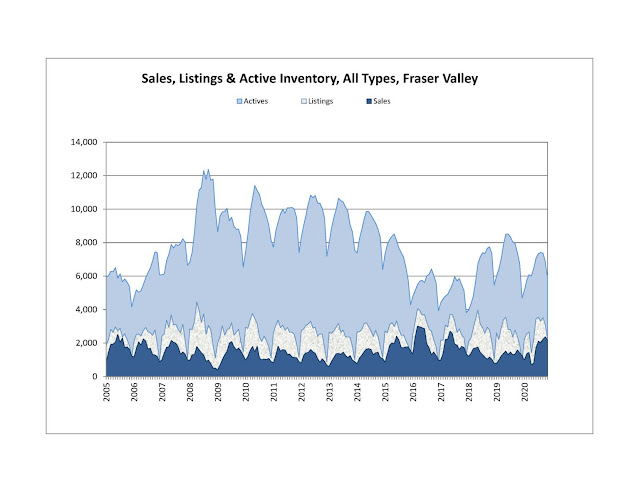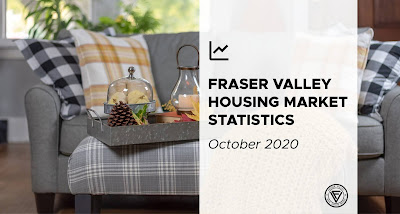7 Ways Sellers Can Up Their Home's "Screen Appeal"
When selling a home, presentation is everything. Successfully staging a property can help buyers visualize themselves living in your home, which ultimately can lead to more offers.
While staging your home for photos has always been important, sellers now have to pay even more attention to their home’s “screen appeal” to get noticed. Since there are fewer in-person viewings and even fewer open houses than ever before, paying attention to how your home appears on desktops and mobile devices is critical. Buyers are relying on virtual home tours and virtual neighbourhood tours to browse properties, and sellers are adjusting strategies accordingly.
By focusing on how your home looks in photos, videos, and online in general, you can give yourself the best possible chance to sell your home in today’s increasingly virtual market. Here are a few tips on upping your home’s screen appeal as you get your listing ready.
Move or hide “accessories” (in other words, declutter)
Before taking any photos or videos, make sure you’re putting your home’s best features forward while also minimizing distractions. Do a sweep of the space and see what small items can be tucked away. This includes small kitchen appliances such as coffee-makers or blenders, remote controls, toys, toothbrushes, lawn ornaments, garbage and recycling bins, shampoo bottles, and so on. You should also remove fridge magnets, and overly personal photos and mementos. By removing clutter (even if it’s not clutter to you), you’ll make your home feel more open, and it will help allow prospective buyers to visualize themselves in the space.
Play around with lighting
Indoor lighting translates very differently on a screen versus in person. So, first things first: take a lot of test photos and videos to see what’s working and where. Natural light looks much better on screen than artificial light. The time of day when your space will photograph best will depend on which directions your windows face. You want to find a balance so that natural light fills the space without casting harsh shadows or glares. Try raising blinds and opening doors to get the most amount of light in. Or, try putting up thin, white curtains to help diffuse the light if needed.
Next, layer lights and lamps at various heights to fill up the room. Test different combinations of overhead lights, standing fixtures and table lamps to find the best amount of coverage. No matter what, ensure the temperature (cool or warm) and type (LED, fluorescent, etc.) are consistent in the room you’re photographing.
Use vertical space
Walls aren’t just for photos and artwork. When staging for a virtual home tour, keep in mind that choosing abstract art is a great way to add sophistication and style, and match many people’s tastes. Beyond that, using vertical space to get items off of the floor can help make a room feel larger, more open and less cluttered when viewed on a screen.
Use shelves instead of floor-standing furniture whenever possible: hang a floating shelf beside your bed instead of a side table or line up a column of shelves in place of a large bookcase. Take your lighting off the floor, as well, and use wall sconces, table lamps and pendant lights instead of relying only on floor lamps. Check out this blog post on design tips to make a small space feel bigger for more ideas on the best ways to use vertical space.
Organize pantries with glass containers
This trend was pulled straight from Pinterest and echoed by the always-organized Marie Kondo. By decanting all of your pantry staples into clear, glass jars, you’ll remove the distractions and cluttered-feel cause by labels and packaging. Since storage is often a key feature home buyers look for, this tactic will make your pantries a focal point of an image, instead of an eyesore.
This method also works with bath and cleaning products. You can instantly glamourize your tub area by replacing plastic soap and shampoo packaging with antique-looking glass jars (that you can buy for cheap at a dollar or thrift store).
Add greenery
Plants are one of the biggest interior decorating trends flooding Instagram today, which can be attributed to the fact that they really pop in photos. A few well-positioned plants add brightness and life to a space and to an image. Adding a variety of sizes and species brings personality to a room. If you want to jump on this trend to enhance your home’s screen appeal, but don’t think you can keep a real plant alive, there are many artificial plants you can find today that will look real in a photo or video, but won’t require your ongoing attention once the virtual tour wraps. While introducing greenery definitely helps with screen appeal, be careful to not overwhelm a space. The “jungle aesthetic” isn’t for everyone.
Artfully curate your shelves
To keep things visually interesting and make your bookcase screen-ready, there are a few steps you can take. First, don’t simply line books up library-style. Have some lined up vertically, others stacked horizontally. Then, fill up extra space with small plants, candles, keepsakes, artwork and photos (without making them feel cluttered or too personal). Finally, make sure the lighting around your bookcase is appropriate. Add some battery-powered lights to the shelves, surround it with sconces, or place a floor lamp nearby.
Revert rooms to their intended use
If you’ve really customized how you use your space, you’ll want to consider that potential home buyers may not have the same needs as you. For example, many people have set up home offices in their dining rooms. Your potential buyers might want to prioritize an eating space over a working space, so seeing this change might be off-putting. Instead, show off the rooms of your home in the way they were intended to be used. Before starting your virtual tour, tuck away your computer and make the dining area meal-friendly again. If you’re using a patio as storage, tidy it up and make it part of the living space. You can always revert back to the way you use the space after your home tour is done, but this way your potential buyer can see themselves in the space, too.
Getting your home screen-ready before a photoshoot or virtual tour can be similar to how professional stagers would set up before an in-person open house, with a few exceptions. By paying special attention to lighting, storage, décor, and how a space is used, you’ll create a photo and video-friendly space that will help attract buyers in today’s increasingly virtual real estate market.
Know someone moving
ANYWHERE in the WORLD?
Call us today--We know the BEST agents everywhere!!
Serving Abbotsford,
Chilliwack, Mission, Langley, Surrey and the WORLD!
Office Phone: 604-743-7653
Web Site: gelderman.ca
























